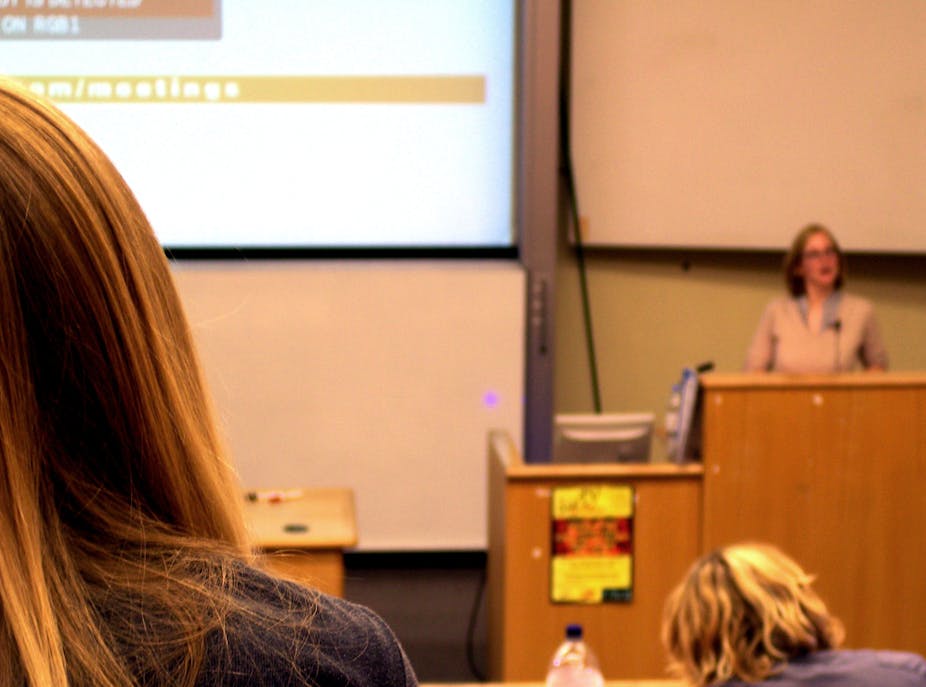Narcissistic, lazy, and overly confident – this is the way some see the new generation of young people starting to go to our universities.
According to teacher Lynn Van Der Wagan, who sparked an online debate recently with this article, members of “Generation I” form strong opinions without enough knowledge and are reluctant to work. Reactions to her article – mostly in agreement – came in thick and fast.
As I take an interest in who will be next in my class, Van Der Wagan’s provocation has prompted a few thoughts of my own on how to approach teaching this new generation.
A new breed
Be assured, I do not see the current crop of Australian tertiary students through rose-tinted glasses. But I am certain that “young people these days” do make their teachers better.
While some students may expect effusive praise, they usually get prompt feedback. While some may wish to give their opinion unchallenged, they do get corrective engagement which all the class can learn from. In expecting respect and responsiveness “young people these days” have put the onus on their lecturers to do a half-decent job.
I would hope that tertiary students are not shamed or discouraged by their lecturers during their studies. But that they do not always feel happy as learners is not necessarily cause for concern; this is often a sign that learning is happening.
Shameful learning
Everyone seems to remember the 1990s as the time when political correctness reached its zenith in universities. But the shaming of students that used to go on in those days seems unbelievable to me now.
When I was an undergraduate student in the early 1990s, I was in a tutorial where after five minutes of silence a student summoned courage to make a point. The lecturer instead of encouraging the student or making a constructive comment, just told the student that what he had said was “absolute rubbish.”

On another occasion, in a lecture where the students were clearly unprepared, the lecturer launched off with: “This isn’t kindergarten you know; we aren’t here to run around in circles all day”.
Who should speak?
Van Der Wagen argues that education experts have been misguided in empowering students in Australia to develop an “unwavering self-belief,” contrasting this with her experience in China.
Like Van Der Wagan I have been in the teaching game for a fair while and I have had stints of teaching in China. I agree with her comment that mainland Chinese students expect direction and are bemused by lecturers who ask them questions.
I found that my students may not have been ready to say what they thought, but were ready to hear a four hour monologue.
Some Australian students seem to prefer the monologue too. In one evaluation of my teaching a student wrote “I am paying to hear what you think, not what the bloke sitting next to me thinks”. In another year one asked: “Can you just LECTURE us?”
Fair enough points, you might venture. But these are not the opinions of the majority or necessarily reflecting the best way for most students in the social sciences to learn.
It occurs to me, however, that the question of who speaks in class and why is as important now as it has ever been. This is because the quality of our interactions with students in class is coming into question.
Bringing something to the table
One legacy of students expecting better from lecturers is the interactive teaching style which is now so common. But tertiary students can’t very well demand interaction and then not bring anything to class. When they do not take the opportunity to interact, it is unfair to criticise their lecturer for falling back on the monologue.
Students have to bring some level of knowledge in order to be stimulated. A student who opens the textbook before the lecture can bring even the most dreary topic to life. Such a student arrives at class with a stake in the discussion. Even an understandable misapprehension arising from the reading gives us some place to start.
Teaching my Chinese students, I found that if there was a single line in my Powerpoint slides that seemed out of context, then they would beset me at the end of the session with very specific questions about it, for there was confusion to put right. So there may not have been in-class dialogue between us at every moment but they were engaged and interacting with material in class.
As long students can engage and a few lightbulbs get turned on, then that’s all that matters, I don’t care how. But if it does not happen, in any form, in China or Australia I will choose a monologue over 100 minutes of silence because, unless I start teaching mime, something has to be said.

